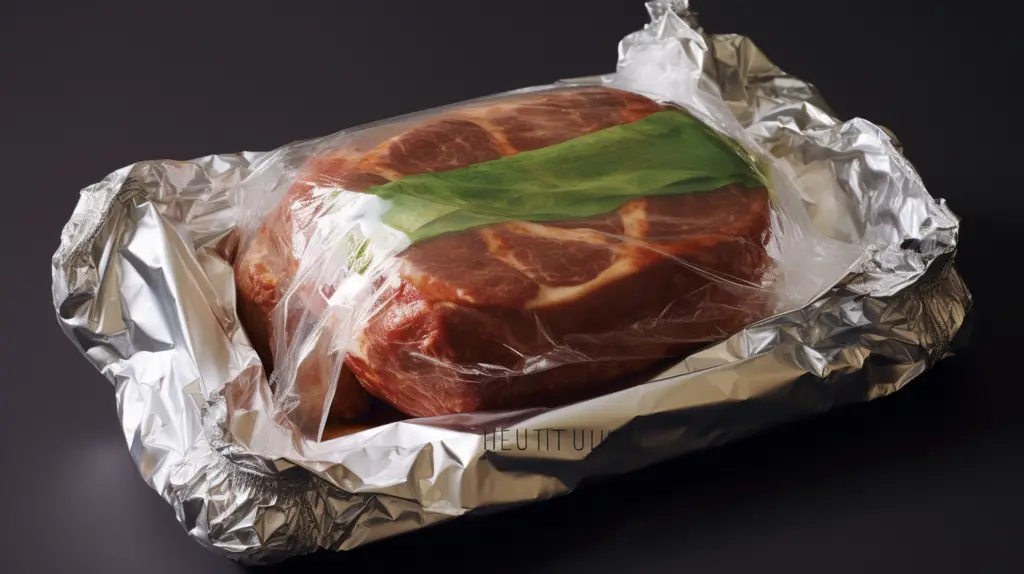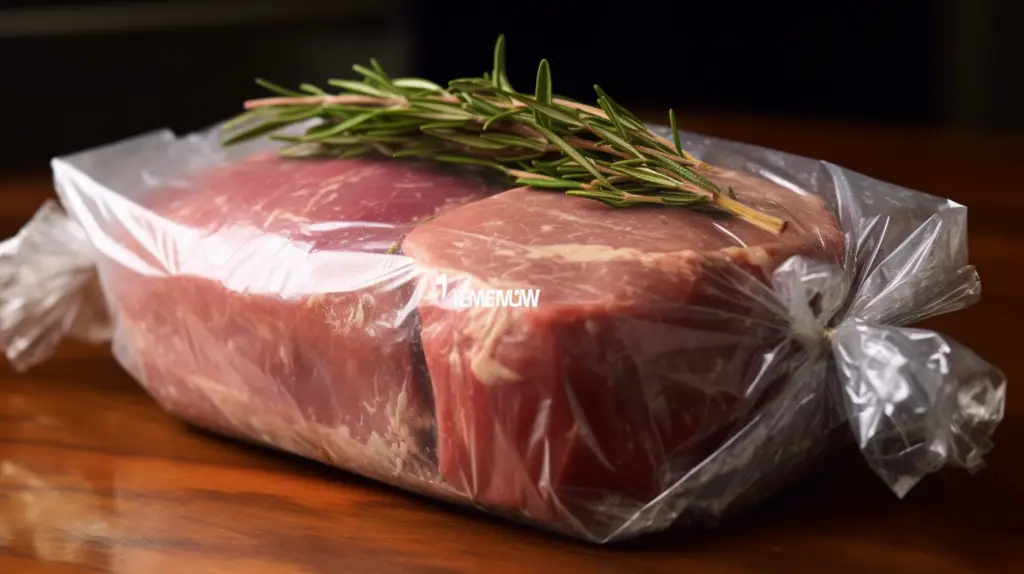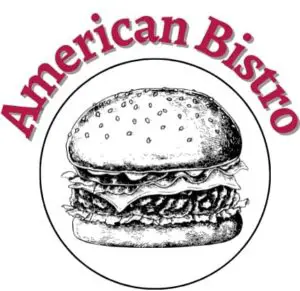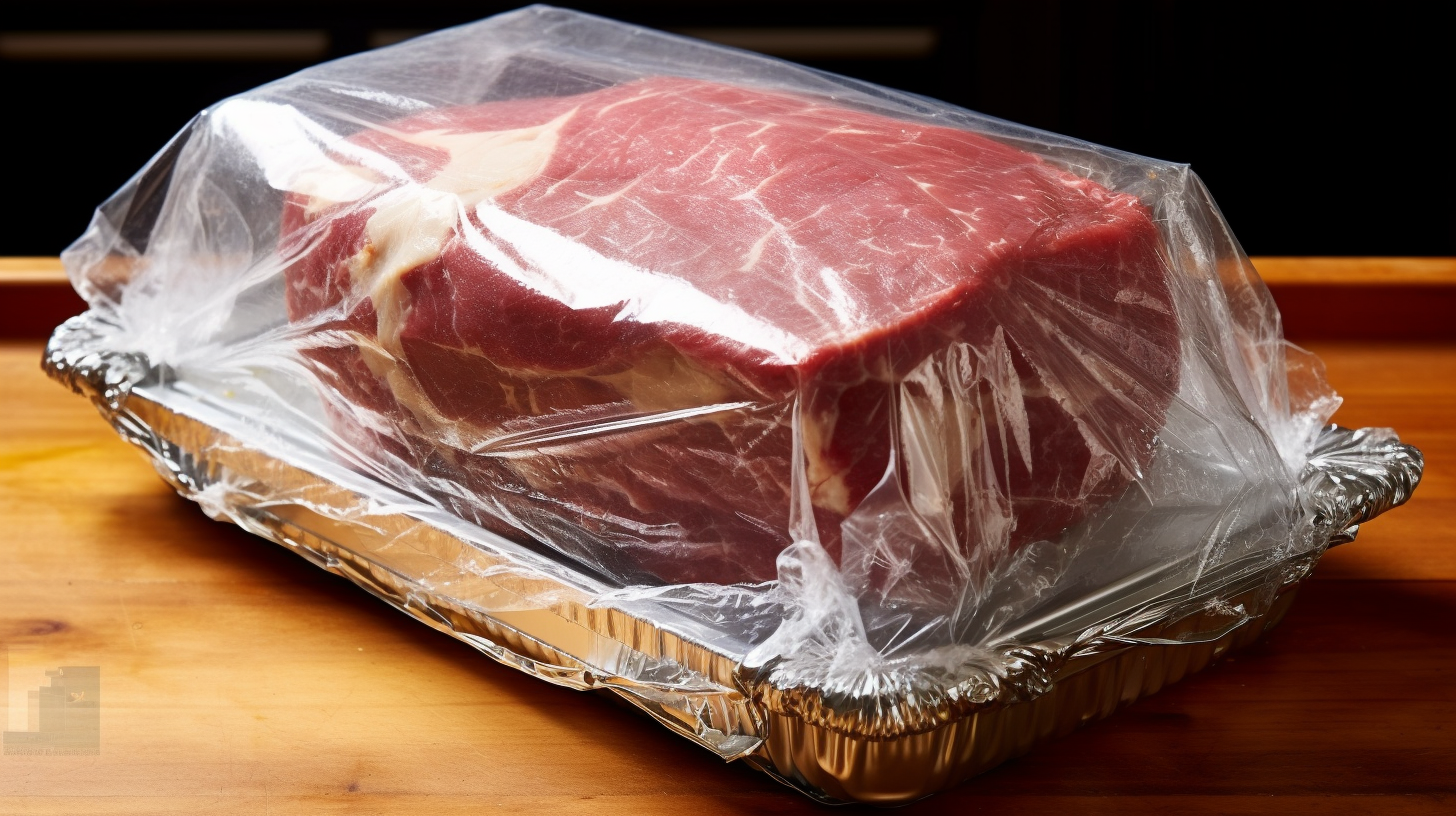Freezing a prime rib roast is an excellent way to preserve this delicious cut of meat for future meals. However, improper freezing and thawing techniques can affect the texture and taste of the prime rib roast. Therefore, it is essential to follow proper storage guidelines to ensure that your frozen prime rib roast retains its flavor, tenderness, and juiciness.
In this article, we will discuss the steps you need to take when preparing your prime rib roast for freezing. We will also provide tips on choosing the right freezer container, wrapping your prime rib roast correctly, labeling and dating your frozen meat, defrosting your frozen prime rib roast safely, reheating it properly if necessary, and storing leftover prime rib roast in the fridge or freezer.
By following these simple steps, you can enjoy a perfectly cooked and flavorful prime rib roast at any time without worrying about spoilage or loss of quality.
Key Takeaways
- Proper storage guidelines should be followed to ensure texture and taste are not affected while freezing prime rib roast.
- Trim excess fat and tie with butcher’s twine before freezing to make it easier to handle.
- Airtight containers such as vacuum-sealed or heavy-duty plastic bags are ideal for storing frozen prime rib roast.
- The ideal temperature for storing beef in the freezer is between 0°F and -5°F.
Preparing Your Prime Rib Roast for Freezing

To prepare a prime rib roast for freezing, it is recommended to first trim excess fat and tie the roast with butcher’s twine to maintain its shape during freezing and thawing. Trimming fat is important because it can become rancid in the freezer and affect the quality of the meat. It’s best to leave a thin layer of fat on top of the roast for flavor, but any large pieces should be removed.
Additionally, seasoning options should be considered before freezing. Some people prefer to season their prime rib roasts before cooking, while others prefer to season after thawing. If seasoning before freezing, be sure to wrap the seasoned roast tightly in plastic wrap or aluminum foil before placing it in a freezer container.
Choosing the right freezer container is crucial for maintaining quality during freezing and thawing. Airtight containers such as vacuum-sealed bags or heavy-duty plastic bags with zip closures are ideal for preventing freezer burn and preserving flavor. Avoid using containers that allow air inside, such as cardboard boxes or paper wrappings.
By following these steps, you can ensure that your prime rib roast will stay fresh and delicious until you’re ready to cook it. With proper preparation and storage techniques, you can enjoy restaurant-quality meals at home without worrying about wasting food or sacrificing taste.
Choosing the Right Freezer Container

Selecting the appropriate storage container is crucial when preserving meat for an extended period. When it comes to freezing a prime rib roast, there are several types of freezer containers to choose from. Here are four options:
- Plastic wrap: This is a common choice for many people because it is easy to find and use. However, plastic wrap can tear easily and may not provide enough protection against freezer burn.
- Freezer bags: These bags are made specifically for freezing food and are thicker than regular storage bags. They also have a zip-lock seal that helps prevent air from getting in.
- Aluminum foil: Foil can help keep your prime rib roast fresh by reflecting heat away from the meat. It is important to wrap the meat tightly in foil so that no air can get in.
- Vacuum-sealed bags: These bags remove all air from the package before sealing, which helps prevent freezer burn and keeps your prime rib roast fresh longer.
Benefits of vacuum-sealing include reduced oxidation, prevention of moisture loss, and elimination of bacteria growth inside the packaging because oxygen has been removed altogether.
When choosing a freezer container for your prime rib roast, consider how long you plan on storing it and what type of protection you need to ensure its quality remains intact during thawing time as well as cooking process later on down the line.
Properly wrapping your prime rib roast will help maintain its flavor and texture while frozen – this includes selecting an appropriate container as well as taking care when wrapping it up securely so that no air or moisture gets in during storage!
Wrap Your Prime Rib Roast Properly
Properly wrapping meat for storage is essential to maintain its quality and flavor over time. This is especially important when it comes to freezing prime rib roast. Choosing the right wrap can make all the difference in how well your beef stays fresh in the freezer.
When choosing a wrap, opt for one that is moisture-resistant, such as plastic wrap or aluminum foil. Make sure that there are no holes or tears in the material, as this can allow air and moisture to enter. Additionally, double-wrapping your prime rib roast can provide an extra layer of protection against freezer burn.
Proper storage temperature is also crucial when it comes to maintaining the quality of your frozen prime rib roast. The ideal temperature for storing beef in the freezer is between 0°F and -5°F (-18°C to -21°C). Storing at these temperatures will help slow down enzyme activity and prevent bacteria growth, ensuring that your beef stays safe to eat even after extended periods.
Labeling and dating your frozen prime rib roast can help you keep track of its age and ensure that you use it before it becomes too old. This information can also be useful if you need to thaw only a portion of the roast rather than defrosting the entire thing at once.
By following these steps, you can ensure that your prime cut of beef remains fresh and flavorful for months on end without losing any quality or taste.
Label and Date Your Frozen Prime Rib Roast
Maintaining the quality and freshness of your frozen beef can be easily achieved by accurately labeling and dating it. When freezing your prime rib roast, it is important to label it with the date of freezing to ensure that you know how long it has been in the freezer. This will help you determine how long you can keep your frozen prime rib roast while still maintaining its quality.
Here are some tips for cooking and serving prime rib roast that has been frozen:
- Thaw your prime rib roast completely before cooking.
- Season your prime rib roast generously with salt, pepper, garlic, and herbs.
- Allow the meat to rest for at least 20 minutes after cooking to allow the juices to redistribute throughout the meat.
It is important to note that while frozen beef can last up to one year in the freezer, it is best consumed within six months for optimal freshness and taste. Therefore, labeling and dating your frozen prime rib roast is essential in ensuring that you consume fresh meat when thawing and preparing for consumption.
In order to defrost your frozen prime rib roast properly without compromising its texture or flavor profile, there are various methods available such as refrigerator thawing or cold water thawing. These methods will be discussed further in the subsequent section about defrosting your frozen prime rib roast.
Defrosting Your Frozen Prime Rib Roast
When thawing frozen beef, safe defrosting practices are crucial to prevent foodborne illnesses. The best thawing methods for a prime rib roast involve properly planning ahead of time. In general, the safest and most effective way to defrost a prime rib roast is by using the refrigerator method.
This method involves transferring the frozen roast from the freezer to the refrigerator and allowing it to slowly thaw over time. According to a study, refrigerator thawing typically takes around 24 hours per five pounds of meat. Therefore, it is important to plan accordingly and allow enough time for your prime rib roast to fully defrost before cooking.
It’s also important not to rush the process by using other methods such as microwave or hot water since these methods can cause uneven defrosting and increase the risk of bacterial growth in the meat. During this refrigerator thawing process, make sure that your prime rib roast is stored on a plate or tray on the bottom shelf of your refrigerator.
This will help prevent any potential drips or leaks from contaminating other foods in your fridge. Once fully defrosted, you can then move onto reheating your prime rib roast using one of several recommended methods. Safe defrosting practices are essential when preparing a frozen prime rib roast for cooking.
Using best thawing methods like refrigeration ensures that you’re taking proper steps towards preventing foodborne illness and ensuring delicious results when reheating your prime rib roast later on. With this in mind, let’s now explore some different options for reheating your perfectly-defrosted prime rib roast!
Reheating Your Prime Rib Roast
One effective method for ensuring a tender and juicy reheated beef is to use low and slow cooking techniques. When reheating your prime rib roast, it’s important to avoid high heat or rapid heating methods that can dry out the meat. Instead, consider using an oven or slow cooker set at a low temperature, around 250°F. This will allow the meat to gradually reheat without losing its moisture.
When reheating your prime rib roast, you may also want to consider adding some additional moisture to help prevent it from drying out during the process. This can be done by placing the roast in a baking dish with some beef broth or au jus sauce before covering it with foil. The added liquid will create steam which will help keep the meat moist as it reheats.
Once your prime rib roast has been properly reheated, you can serve it in a variety of ways depending on your personal preferences. Some popular serving suggestions include slicing the meat thinly and serving it on sandwiches or as part of a salad, or serving larger slices alongside roasted vegetables and potatoes for a more traditional meal.
Reheating your prime rib roast requires careful attention to temperature and moisture levels in order to ensure that the final product is tender and juicy rather than dried out and tough. By using low and slow cooking techniques along with added moisture when necessary, you can bring new life to leftover prime rib for another delicious meal.
Moving forward into tips for storing leftover prime rib roast…
Tips for Storing Leftover Prime Rib Roast
Proper storage techniques are essential for preserving the flavor and quality of leftover prime rib. After enjoying a delicious prime rib roast, it is important to store any remaining portions promptly, so as not to compromise their taste or texture.
Before storing your leftovers, make sure that they have cooled down to room temperature. This will prevent them from sweating inside the container and creating an ideal environment for bacteria growth.
When it comes to storing leftovers, there are several options available. One common way is to wrap the meat tightly in plastic wrap or aluminum foil before placing it in an airtight container. Another option is to put the meat into a freezer-safe plastic bag and remove as much air as possible before sealing it up. Regardless of which method you choose, make sure that all air has been removed from the packaging before placing it into the refrigerator or freezer.
If you find yourself with more leftover prime rib than you know what to do with, consider using creative recipes that incorporate this flavorful meat into new dishes. Some popular ways include making steak sandwiches with slices of prime rib roast, adding chopped pieces into omelettes or scrambled eggs for breakfasts, or using them as toppings for salads and pizzas. The possibilities are endless when it comes to utilizing leftover prime rib in new ways.
Proper storage techniques are crucial when storing leftover prime rib roast. Taking care to wrap and package your meat correctly can help preserve its flavor and quality until you’re ready to enjoy it again. And if you find yourself with too many leftovers on hand, don’t hesitate to get creative in incorporating them into new dishes – you might be surprised at how versatile this delicious cut of beef can be!
Frequently Asked Questions
How long can a frozen prime rib roast be stored in the freezer before it goes bad?
The duration of freezer storage for a frozen prime rib roast depends on various factors, including the quality and packaging of the meat. Generally, it is recommended to consume or cook the roast within six months of freezing to ensure its optimal quality.
Proper thawing techniques are crucial in ensuring that the meat retains its flavor and texture. The safest method is to thaw the roast in the refrigerator for several hours per pound of meat, at a temperature below 40°F. Other methods such as cold water thawing or microwave thawing may also be used but require more care and attention to avoid bacterial growth or uneven cooking.
When cooking a prime rib roast, it is important to select an appropriate technique that suits your preferences and equipment. Some commonly used methods include oven roasting, grilling, or smoking. Regardless of the technique chosen, it is essential to use a meat thermometer to check that the internal temperature reaches at least 145°F for safe consumption.
Can a prime rib roast be refrozen if it has been thawed and then not used?
Refreezing a prime rib roast after it has been thawed is not recommended due to the associated risks. When meat is frozen, ice crystals form and puncture the cell walls, causing moisture to be lost when the meat is thawed. If this process happens multiple times due to refreezing, it can result in an unappetizing and tough final product.
Additionally, bacteria can thrive in the temperature range between 40°F and 140°F, which means that if a previously thawed prime rib roast is refrozen without being cooked first, there is a risk of harmful bacteria growth.
To ensure food safety and quality, it’s best to follow proper thawing techniques by placing the frozen prime rib roast in the refrigerator for several days before cooking it. It’s important to note that once a prime rib roast has been fully thawed in the refrigerator or by other safe methods, it should be used within three to five days for optimal freshness and taste.
Can a prime rib roast be frozen with the bones still attached?
It is quite fascinating to see how people often overlook the most basic aspect of freezing meat, which is whether it can be frozen with bones or not.
To answer the Current Question, yes, a prime rib roast can be frozen with the bones still attached. However, it is crucial to follow certain best practices to ensure that the quality and flavor of the meat are preserved during storage.
Some of these methods include wrapping the meat tightly with plastic wrap or aluminum foil and then placing it in an airtight container before storing it in the freezer. Another essential step is to label and date the package correctly so that you can keep track of its age and avoid consuming expired meat.
By following these guidelines, you can safely freeze your prime rib roast with bones intact and enjoy it even after several weeks or months have passed without compromising on taste or texture.
Is it necessary to remove excess fat from the prime rib roast before freezing it?
When it comes to freezing a prime rib roast, the question of whether or not to remove excess fat can arise. While some may argue that removing the fat is worth it for health reasons, there is no clear consensus on this matter.
In terms of nutritional value, studies have shown that frozen meats can retain most of their nutrients and quality when compared to fresh meats. However, it’s important to note that freezing can cause a slight loss in texture and flavor.
Ultimately, whether or not to remove the excess fat before freezing a prime rib roast is up to personal preference and dietary needs.
Can a prime rib roast be frozen with marinade or seasoning already applied?
Freezing a prime rib roast with marinade or seasoning already applied can be done, however, it may not yield the best results. The pros of freezing with seasoning include convenience and time-saving benefits. However, there are also cons to consider such as degradation of flavor and texture during the thawing process.
It is recommended that if you choose to freeze a seasoned prime rib roast, you should do so for no longer than 3-4 months in order to preserve the quality of the meat. When it comes to thawing a seasoned prime rib roast, it’s best to let it defrost slowly in the refrigerator over several days rather than using quick methods such as microwave or hot water baths which can cause uneven cooking and loss of flavor.
Conclusion
Freezing a prime rib roast can be a great way to extend its shelf life and ensure that you always have a delicious meal on hand. However, it’s important to take the right steps to ensure that your prime rib roast stays fresh and flavorful even after being frozen.
This article has outlined the key steps for freezing, storing, defrosting, and reheating your prime rib roast. Choosing the right freezer container, properly wrapping your roast, and labeling it with the date are all essential steps in ensuring that your prime rib stays fresh in the freezer.
When it comes time to defrost and reheat your meat, following proper food safety guidelines is crucial to avoid any potential health risks. These tips can help you make the most of your prime rib roast while also minimizing waste and saving money in the long run.
Symbolically speaking, freezing a prime rib roast represents our desire for security and comfort in uncertain times. By taking proactive measures like freezing our food supply or stocking up on essentials, we seek to alleviate our anxieties about an unpredictable future.
However, just as improperly stored food can lead to spoilage and waste, so too can excessive focus on material possessions or temporary comforts leave us feeling unfulfilled or empty inside. Ultimately, finding true peace and contentment comes not from hoarding resources but from cultivating gratitude for what we already have and living with intentionality and purpose each day.

